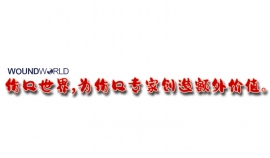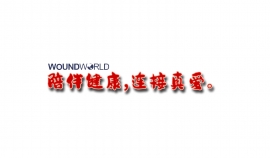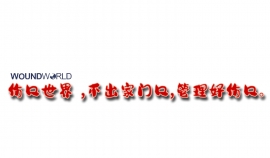文献精选
This article is based on a presentation by Professor Steven Jeffery at the annual Wounds UK conference in Harrogate, on 7 November 2023. Professor Jeffery presented clinical studies on how a bioengineered wound therapy with a porcine urinary bladder matrix (UBM) may facilitate healing of chronic wounds.
Steven LA Jeffery
Medical Director Pioneer Wound Telehealth and Professor of Wound Study, Birmingham City University
John McRobert
Clinical Research Director, Pioneer Wound Telehealth
Key words
- Chronic diabetic wounds
- Urinary bladder matrix
- Macrophages
- Wound healing
- Meeting report
- Wound care services
This meeting report has been funded by an educational grant from Integra
Steven Percival
BSc, PGCE, MSc, MSc, PhD, CEO, 5D Health Protection Group Ltd, Professor (hon), School of Medicine, University of Manchester, UK
Leanne Atkin
PhD MHSc, RGN, Vascular Nurse Consultant/Lecturer Practitioner, Mid Yorks NHS Trust, University of Huddersfield, UK
Key words
- Infection
- Flaminal®
- Antimicrobial resistance
- Meeting report
Declarations
The symposium and report were supported by Flen Health.
Management, as well as prevention, of wound infection is key in the promotion of the healing process. In India, over one million people are moderately or severely burnt every year, and managing the challenging burn wounds is a daily reality for clinicians in the country. Silver has been used as an antimicrobial in burn wound management for decades and modern advanced dressings can provide safe prevention and management of infection in these cases. This article reports the cases of two adults, an infant and a child with burns, at risk of infection and managed with a Technology Lipido-Colloid non-adherent dressing with silver (TLC-Ag; UrgoTul Ag/Silver). The main benefits observed when using the evaluated dressing in these patients included rapid wound healing but also patient-related outcomes, such as decrease in pain and atraumatic removal.
Clockwise from top left:
Dr Venkateswaran
Plastic Surgeon, Jupiter Hospital, Mumbai, India
Dr Ravichander Rao A
Plastic Surgeon, Care Hospital, Hyderabad, India
Dr Krishna Kumar
Plastic, Aesthetics, Burns, Hand and Reconstructive Microsurgeon, Kovai Medical Centre & Hospital, Coimbatore, India
Dr Sankamithra
Consultant Plastic Surgeon, Lakshmi Medical center, Pollachi, India
Key words
- Burns
- Lipido-colloid non-adherent dressing
- Silver
Declarations
All authors have no particular conflicts of interest to declare regarding these cases.
Negative pressure wound therapy (NPWT) supports the healing process by removing fluid and drawing out the infection from a wound, promoting the growth of new tissue. The device works by providing and distributing negative pressure evenly across the wound bed, either through the application of an open cell foam or a gauze dressing. NPWT provides a warm, moist wound bed while removing wound fluid that contains factors that inhibit cell growth, enhances wound oxygenation and improves the flow of blood and nutrients to the wound. NPWT also creates mechanical forces that influence the wound macroscopically, inducing cell proliferation, cell migration to the wound and angiogenesis. For infected wounds, the device can be used to instil antibiotics. In this article, a 57-year-old Caucasian woman with respiratory failure developed sepsis secondary to an intra-abdominal infection with abscess. Vancomycin 1mg/mL wound instillation, instilled as 100mL every 3 hours with a dwell time of 10 minutes, was administered concomitantly with intravenous vancomycin in the successful management of this patient.
Alison Bunnell
Doctor of Pharmacy Candidate 2022, North Dakota State University, Fargo, ND, USA
Erin Beauclair
Doctor of Pharmacy Candidate 2022, North Dakota State University, Fargo, ND, USA
Breanna Jones
Doctor of Pharmacy, Pharmacy Department, Sanford Medical Center Fargo, Fargo, ND, USA
Emily Greenstein
Advanced Practice Registered Nurse and Certified Nurse Practitioner, Wound Care, Sanford Medical Center Fargo, Fargo, ND, USA
Justin M Jones
Doctor of Pharmacy, Pharmacy Department, Sanford Medical Center Fargo, Fargo, ND, USA
Andrea R Clarens
Doctor of Pharmacy Pharmacy Department, Sanford Bemidji Medical Center, Bemidji, MN, USA
Key words
- Acute kidney injury
- Computed tomography
- Kidney Disease Improving Global Outcomes
- Negative pressure wound therapy
Declaration
Emily Greenstein reports she has been a consultant for Urgo medical, 3M and coloplast. 3M manufactures V.A.C. VeraFlo. None of these manufacture or distribute vancomycin instillation described in this manuscript.




